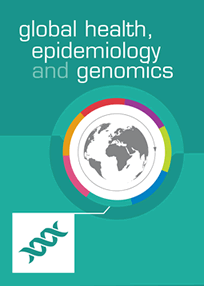This blog post was written by Cristina Pomilla, Deepti Gurdasani, Martin Pollard and Tommy Carstensen The advent of low-cost sequencing has provided a deeper understanding of the role human genetic ...
icddr,b has combined both the insights of modern biomedical science with detailed population surveillance to advance scientific understanding of infectious disease, and other public health concerns, within one of the ...
The concept of seed funding emerged from the world of investment finance, where investors commit an initial early-stage stake (seed) of funding to support the development of new concepts, products ...
According to the WHO global burden of disease, high blood pressure (HBP) is the leading cause of morbidity, mortality and disability worldwide resulting in 9.4 million deaths and 162 million ...
Despite recent declines in the number of cases worldwide, malaria remains a public health concern with 3.2 billion people still at risk of infection globally. Fortunately, malaria is a treatable ...
Globally, 3.2 million deaths per year can be directly attributed to insufficient levels of physical activity. As a result, it is one of the top ten leading risk factors for ...
Despite significant reductions across much of the developed world, tuberculosis (TB) is now ranked alongside HIV as the leading cause of death from infectious disease worldwide. There are many challenges ...
In recognition of International Women’s Day 2016, GHEG is inviting submissions for a themed collection on Women in Global Health. A core mission of global health is to achieve health ...
Guillain Barré syndrome (GBS) is a rare, although serious, autoimmune condition that affects the peripheral nervous system, yet the underlying risk factors remain unknown. Consequently, there is a need for ...
We are delighted to announce the publication of the first papers in Global Health, Epidemiology and Genomics. As GHEG is fully Open Access, these papers, and all papers published in ...










